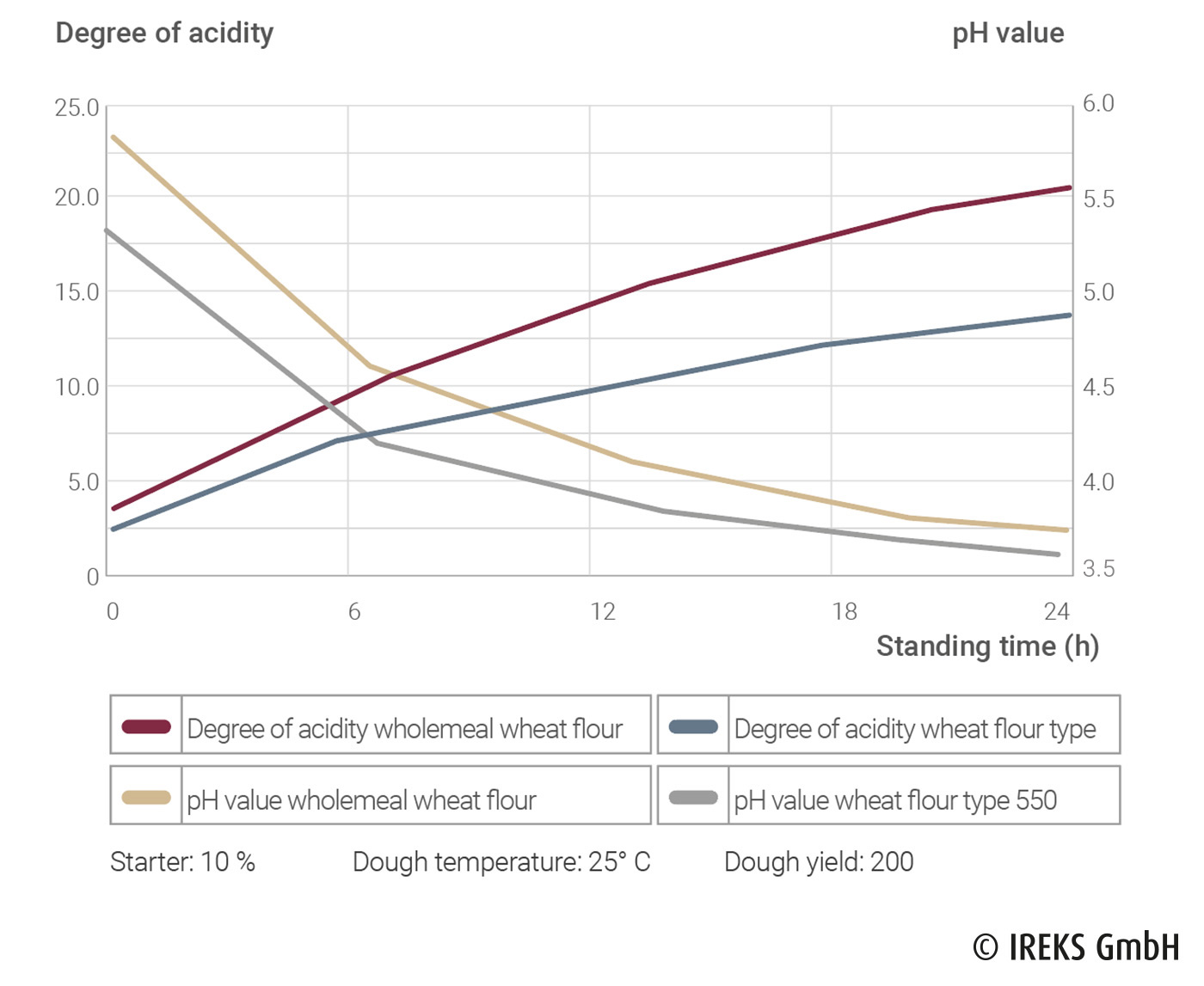For the baking ability of milled wheat products, the acidification of wheat flour is not required from a technological point of view. Wheat sourdoughs are used to enhance the smell and taste and to achieve specific crumb properties.
Due to the addition of wheat sourdoughs, the pH value of baked goods is lowered and, in this way, a higher microbiological stability achieved. This effect is heightened if acetic acid has also been formed in the wheat sourdough, which counteracts the formation of mould or rope disease.
As is the case with wheat sponges, various processing methods with different objectives have been developed for wheat sourdoughs. Achieving a particularly strong aroma and taste, but also the aeration of the baked goods, is thus the focal point.
In wheat sourdoughs, the formation of acid is specifically achieved by means of the processing parameters and the addition of starter cultures or the reproduction of the microflora inherent to the flour (spontaneous sourdough).
The wheat sourdough processes are nowadays mainly started with pure cultures which contain selected lactic acid bacteria and, in part, yeasts. This is because obtaining starter from spontaneous fermentation requires a lot of time and effort and is susceptible to faults.
The degree of acidity of wheat sourdoughs mostly lies at 10 – 15. The quantity of addition is based on the degree of acidity of the relevant wheat sourdough, the desired aroma and taste as well as the type of baked goods.
In contrast to wheat sponges, which can be used with up to 60 % of the total flour quantity, wheat sourdoughs are limited in regard to the quantity of addition and can only be used with a maximum of 5 % for sandwich bread or toast bread, for example. Too high percentages of sourdough cause a strong bread taste, a reduced volume of baked goods and a too tight and firm baked goods crumb. As a result, also the amount of swollen flour in the dough is limited. To obtain an optimum swelling of the flour ingredients, the additional use of mild wheat sponges is possible in the bread recipes.
The use of high quantities of wheat sourdough can lead to unstable doughs and to significant losses in volume in the baked goods. This occurs in particular when the wheat sourdough has achieved a high degree of acidity.
In plant bakeries, wheat sourdough is processed in special sourdough installations. With a dough yield of 200 – 220, the wheat sourdoughs can be pumped and can be processed in the bread dough after a maturing time of 12 – 16 hours. Depending on the requirements, a processingtime of one to two days is possible, but the sourdough has to be cooled immediately after maturity to 8 – 12° C, however.
Firmer sourdoughs with dough yields of approx. 160 are found more seldom. Here the percentage of acetic acid formed is higher than in soft wheat sourdoughs.
For the start of the sourdough, a sufficient amount of active lactic acid bacteria in the form of a starter has to be introduced to inhibit foreign fermentations by undesired micro-organisms from the flour or the ambient air. Following adequate acidification of the wheat sourdough, this can be used as a starter for the next process/stage. A new start should, after previous thorough cleaning of the containers, take place at least once a week.
Wheat flours show a similar development of acid as rye flours with a comparable mineral content. The mineral content of the flour, the quantity and the quality of the starter, as well as the dough yield of the wheat sourdough, influence the degree of acidity and the pH value. In addition, these parameters have an influence on the ratio of lactic acid and acetic acid. As a result of the better buffer capacity, wholemeal wheat flours lead to an increased formation of acid due to their higher mineral content (see illustration 9.3).


